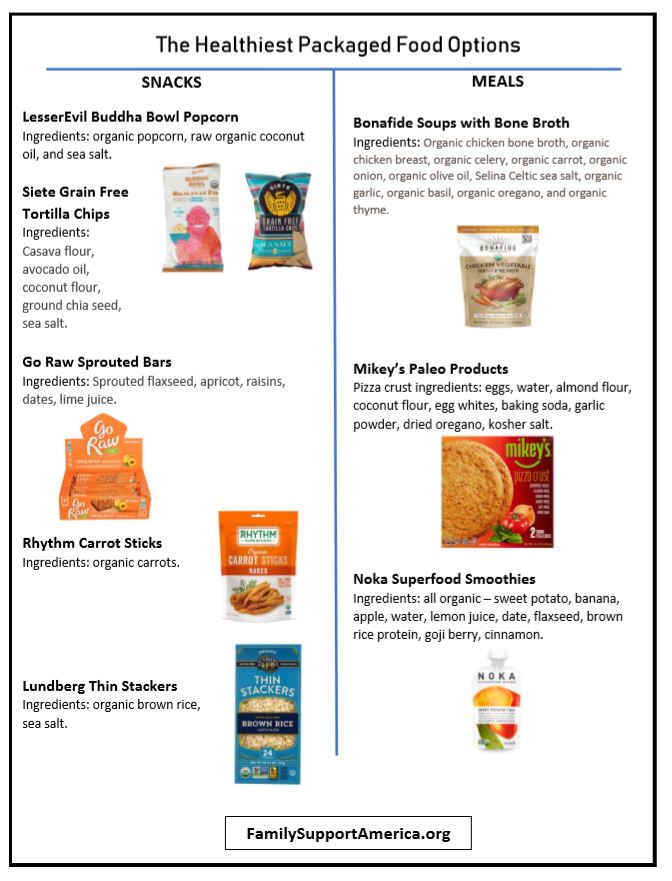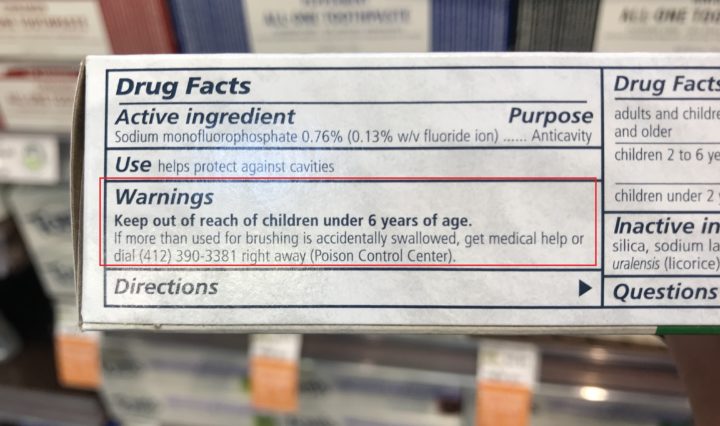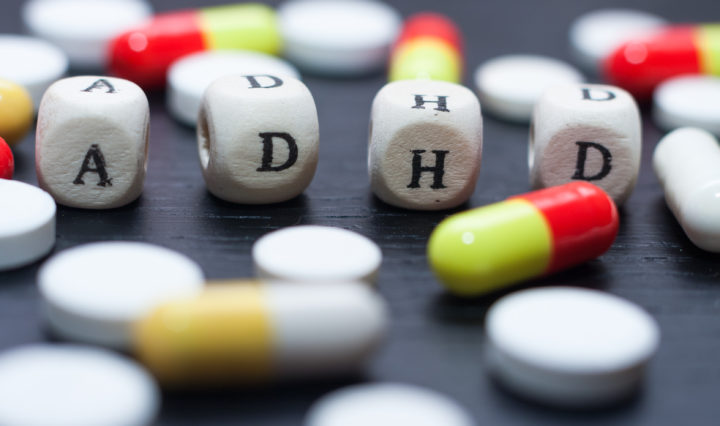As moms or just plain busy individuals, we can use all the help we can get. According to the latest statistics, 90% of Americans don’t like to cook. This is an alarming trend considering how polluted our food has gotten and a lot of that comes from the manufacturing and packing of the product. It’s more complicated than just the ingredients. As mentioned, toxins can leech into the products during manufacturing or from the packaging but we also get nutrient depletion since many packaged food items are cooked at high temperatures. While I advocate for eating whole, organic foods as much as possible, it’s just not realistic for most people. In general here are three rules you should follow when buying packaged/processed foods:
#1 Only purchase processed/packaged foods with short ingredient lists consisting of whole foods (ones you recognize). By now, most of us are aware of the harmful additives found in many packaged foods. To brush up, visit one of my favorite websites: The Environmental Working Group (EWG). You also need to be aware of seemingly benign labeling such as “natural flavors”. Many toxic chemical additives can hide under this ingredient. Also, foods enriched with vitamins are adding the synthetic version of the vitamin. Vitamins are made up of complex chemical structures that work synergistically. When you see only one chemical compound (ascorbic acid for example) it’s a synthetically produced, sub-par version of the vitamin. When vitamins are listed, browse the ingredient list and make sure they come from whole foods. Synthetic, isolated vitamin components can be harmful to your health. Dr. Katharina Johnson states on her website the following, “Synthetic supplements will produce nutritional imbalances in the body and can tax your kidneys before being excreted through the urine. Ever wondered why these high potency “vitamin B” pills make your urine extremely yellow? Because your body recognizes them as foreign and tries to get rid of them as quickly as possible!”
#2 Avoid partially hydrogenated oils (PHOs) and ully hydrogenated oils. PHOs are highly processed products that are no where close to resembling the food they were originally derived from. The process of hydrogenation overloads the oil with hydrogen atoms until it changes its molecular structure. Fooducate puts it this way, “If you do it just right, you’ll have created an oil that is solid enough at room temperature, yet still spreadable (margarine anyone?) This is called partial hydrogenation. Do it too much and you’ll get a fully hydrogenated oil, a solid slab at room temperature. The chemical structure of the unsaturated fatty acids after the partial hydrogenation turns them into trans-fatty acids. But if you go all the way, they turn into the more familiar saturated fatty acids.” We know trans fats as being a major contributory to coronary diseases but trans fats may interfere with the ability of your body’s cells to metabolize the fats that are good for you. Thus, they create cellular damage. Specifically, damage to the cell membrane. Luckily, after decades of damning research piled up and sadly thousands of deaths later, the FDA finally got their act together and ordered a three-year phaseout of PHOs (which has already been extended past this three year mark to January of 2020). However, the EWG points out a loophole that allows trans fats to be used in products still and ,worst of all, they don’t have to be listed on the label. Yet, another way the FDA has let us down. Read more about the half gram loophole here where you’ll also find a tool you can use to search for truly trans fat free foods. Partially hydrogenated oils may include: soybean oil, margarine, shortening, lard, etc. While fully hydrogenated oils will be trans fat free, partially hydrogenated and just hydrogenated oils are sometimes used interchangeably. If the package doesn’t specifically state fully hydrogenated oils, it likely contains trans fats. But note, even fully hydrogenated oils are not something to be sought out (although less of a health concern).These hydrogenated oils are added for flavor and for increasing shelf life but they invoke an inflammatory response in your body. The best practice is to avoid them and stick to healthy oils such as cold-pressed extra virgin olive oil, coconut oil, and avocado oil.
#3 Watch the salt and the sugar. These can be extremely harmful to your health when consumed in excess. Your body needs a certain amount of sodium but there’s hardly a person on the planet today that needs to seek out this mineral. It’s in just about everything (including produce). You shouldn’t avoid it completely but you should be aware of the source. The source of the salt matters. Table salt is highly processed and stripped of many of the accompanying minerals. In addition, it often contains dangerous additives such as aluminum. Unrefined sea salt can have excellent health benefits. Two of the best are Himalayan sea salt and Celtic sea salt. Even when eating quality salt, the amount of sodium should still be calculated and stay in check. Sodium amount is relatively the same for table salt and for sea salt. You just get added benefits from consuming sea salt. The FDA recommends less than 2,400 mg/day. I hardly rely on the FDA guidelines but I suggest using this as a starting point and listening to your body. Signs you’re getting too much sodium include: dehydration, bloating, swelling, dry mouth, high blood pressure, etc. Now, about the sugar. There is no health reason whatsoever to have sugar in your diet. It’s purely about taste for you but it’s also about profits for companies due to the highly addictive nature of the substance. I don’t know about you but I hate being tricked and exploited. I’m all for food tasting good but not at the high costs associated with sugar consumption. Part of my health journey has been to adjust my relationship with food to one where food is seen mainly as a source of nourishment and not purely as a source of pleasure. This is difficult to do and will take time and help. I recommend beginning your journey by reading the book The Pleasure Trap or The Hacking of the American Mind if you struggle with food addictions. Sugar causes inflammation, metabolic dysfunction, fat storage, heart disease, polycystic ovarian syndrome, etc. A growing body of research is linking the rapid increase in Alzheimer’s and dementia to sugar consumption. Dr. Mercola describes sugar accurately in three words, “toxic, addictive and deadly.” If you haven’t seen them yet, That Sugar Film and Fed Up are great documentaries on the damaging effects of sugar. If you only did one thing to improve your overall wellbeing, I would argue that eliminating sugar from your diet would be the most impactful.
To give you some ideas, these are a few of the products I feel ok about buying for my family:

Join our list
Subscribe to our mailing list and get interesting stuff and updates to your email inbox.





I was wondering if you ever considered changing the page
layout of your site? Its very well written; I love what youve got to
say. But maybe you could a little more in the way of content so people could connect
with it better. Youve got an awful lot of text for only having 1 or 2 pictures.
Maybe you could space it out better? https://www.hickoryfoodfactory.com